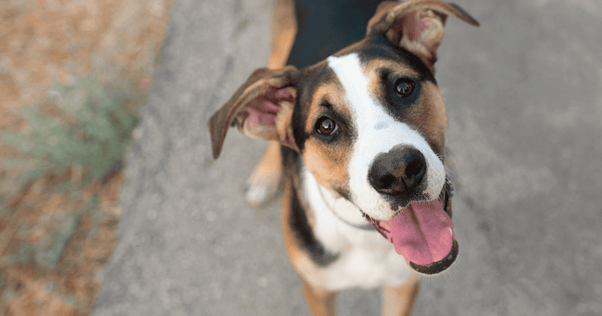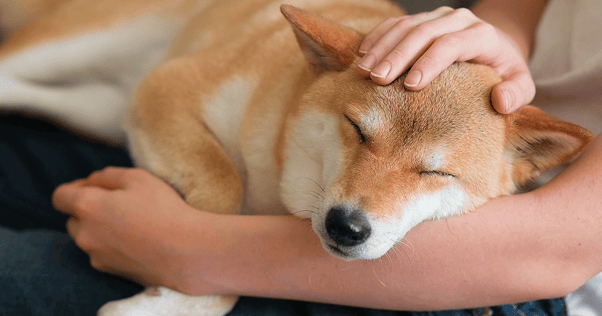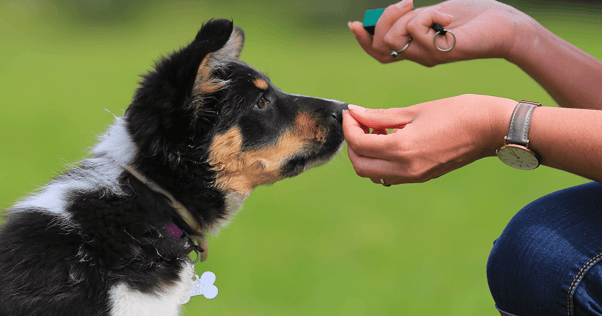Do you ever feel like your dog really gets you? Like they can understand exactly how you’re feeling? Well, you’re probably not the only one! Dogs are amazing at picking up cues from humans and are highly sensitive to our emotions. This connection between us can be useful to understand, particularly if you have an anxious dog or your dog’s body language is often nervous or agitated. After all, the key to a harmonious relationship often lies in the act of staying calm. Let’s explore why!
Understanding the Connection Between Humans and Dogs
As a highly social animal, dogs are experts at reading human body language. From our facial expressions, posture, and movement, right the way through to our tone of voice and even the smells we release from our bodies, we are practically an open book to our furry friends. In fact, dogs are so good at reading our body language that they’ve even been known to differentiate happy facial expressions from angry ones just from photos!

Perhaps most fascinating of all is a dog’s ability to pick up on the emotions in our voices. They process the ‘meaning’ and ‘tone’ of sounds on different sides of the brain, similar to how humans process speech. This means that not only the words we say but how we say them can greatly affect our dogs. Recent research has also suggested dogs pay more attention to us when we use ‘dog directed speech’ (DDS), which resembles the baby voice we use with infants. This could potentially be a great way to strengthen our bonds with our dogs, helping us to form an even deeper connection with one another.
Why Staying Calm Matters for Nervous Dogs
So how does this affect how we should behave in front of our dogs? For one thing, if you’re calm, your pup is more likely to mirror that calmness. On the flip side, if a dog senses fear or stress in you, they’re more likely to feel agitated or respond to a perceived threat. This is especially true if your dog is nervous or if you have an anxious dog. Imagine if they’re feeling nervous already and then you’re also projecting the same emotions. This is only going to amplify your dog’s body language!

With this in mind, you should aim to radiate calmness as much as possible when you’re with your canine companion. This can be done with a few simple steps:
- Use a calm and soothing voice: This is where it pays to understand the power of your tone of voice, particularly when using DDS.
- Move gently but with purpose: Dogs can sense tension or anxiety through our movements. Quick, jerky movements might be perceived as unpredictable or threatening, especially to nervous dogs.
- Use clear signals: Be consistent in your cues and gestures. This clarity helps dogs to understand your intentions better.

Tips for Nervous and Anxious Dogs
On top of remaining calm in front of your dog, creating a serene, dog-friendly environment can have a ripple effect on their state of mind. Here’s how you can help:
- Maintain a predictable routine
- Strengthen your bond by spending quality time together, whether through grooming, playing, training, or just lounging
- Ensure your dog is getting plenty of daily exercise
- Provide mental stimulation, such as with puzzle feeders or through training with positive reinforcement
- Create a comfortable, safe space that your nervous dog can retreat to and where they can rest without being disturbed. You can enhance this area further with a calming diffuser for dogs, like ADAPTIL Calm.
Would you like to learn more about recognizing your dog’s body language? Or discover exactly how ADAPTIL Calm and our other ADAPTIL products work? Then don’t hesitate to check out the rest of our blogs! You’ll find a range of expert tips and guides on caring for anxious dogs, as well as general advice to help your dog live a happy, positive life. And if you’re still wanting more, you can also stay informed by signing up to our newsletter!


